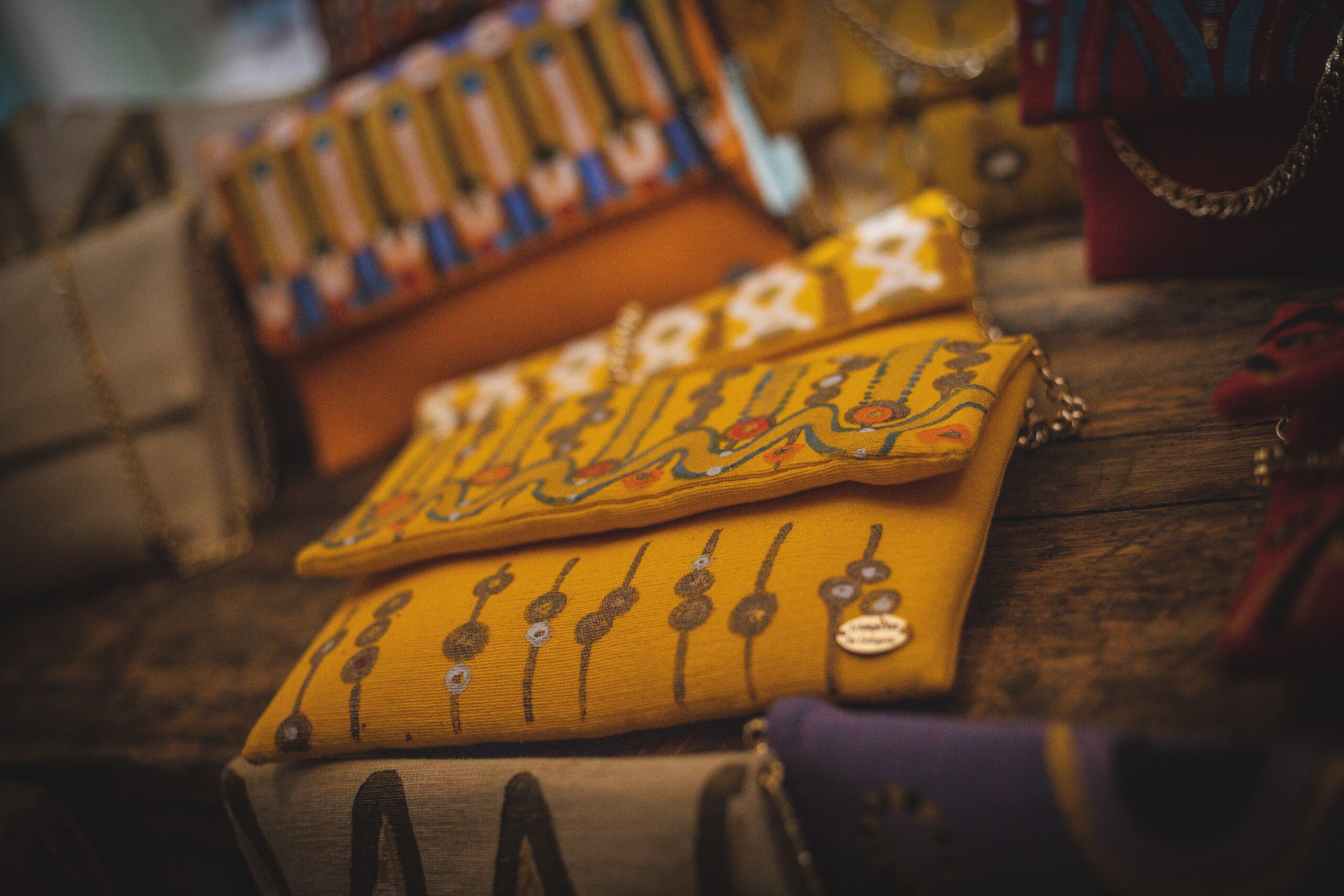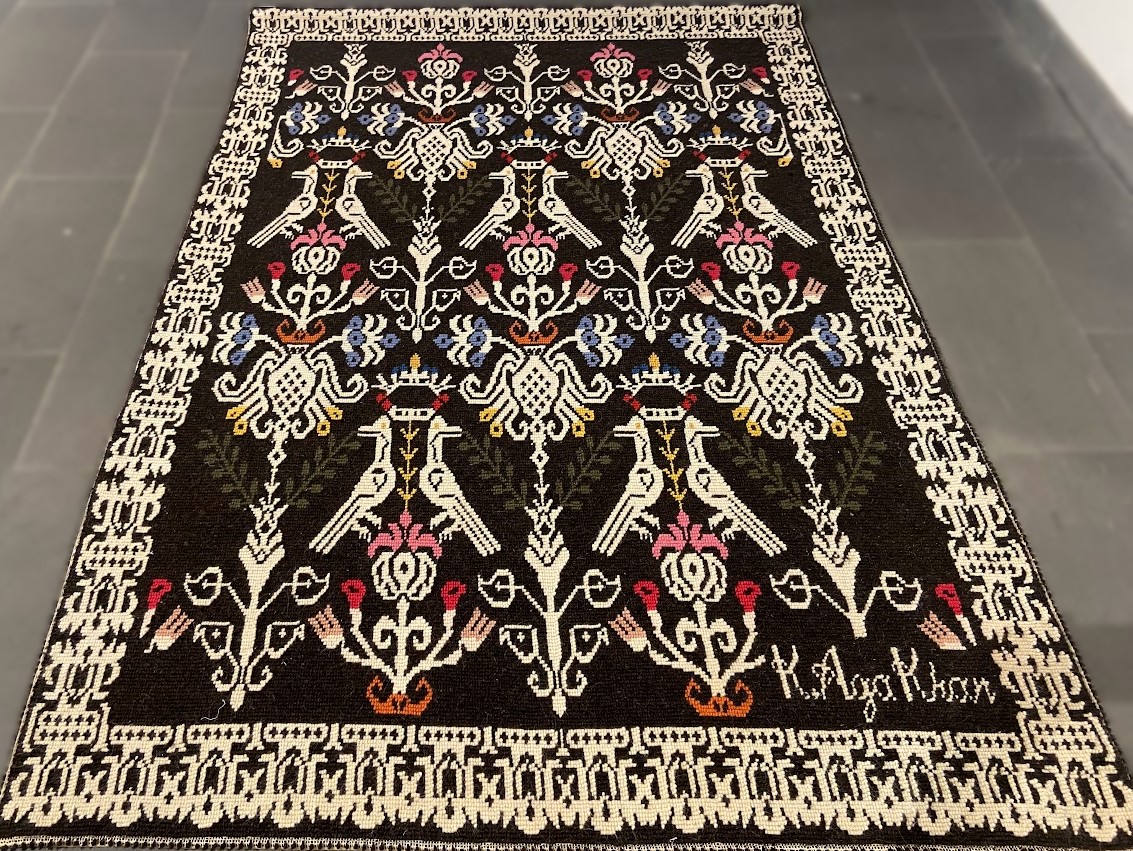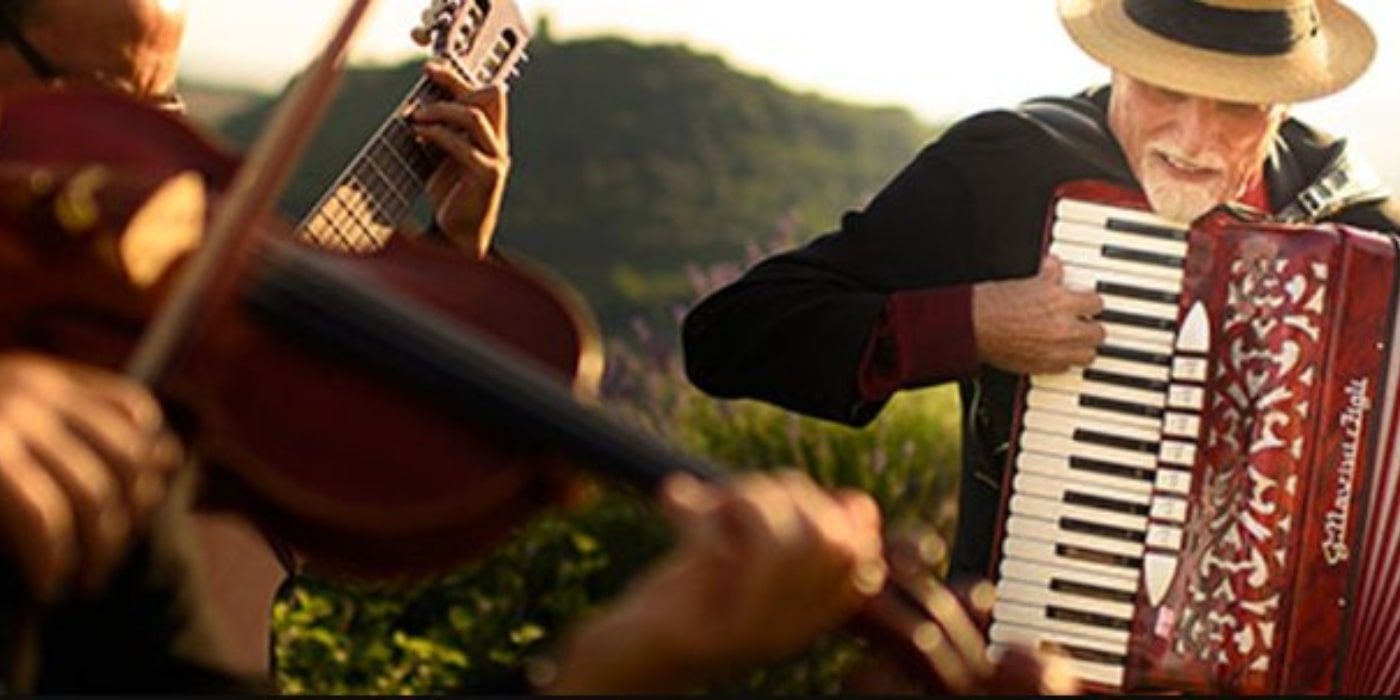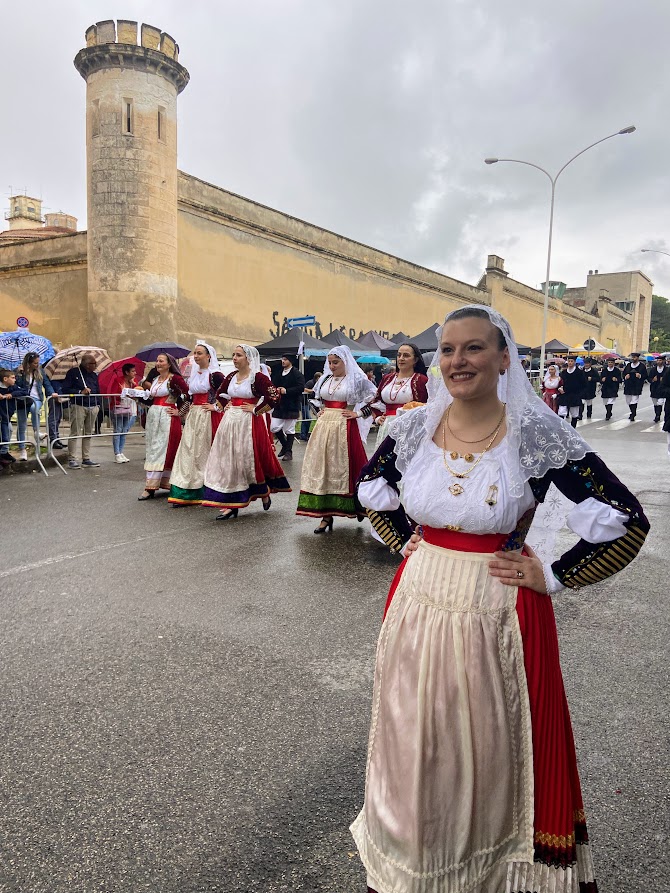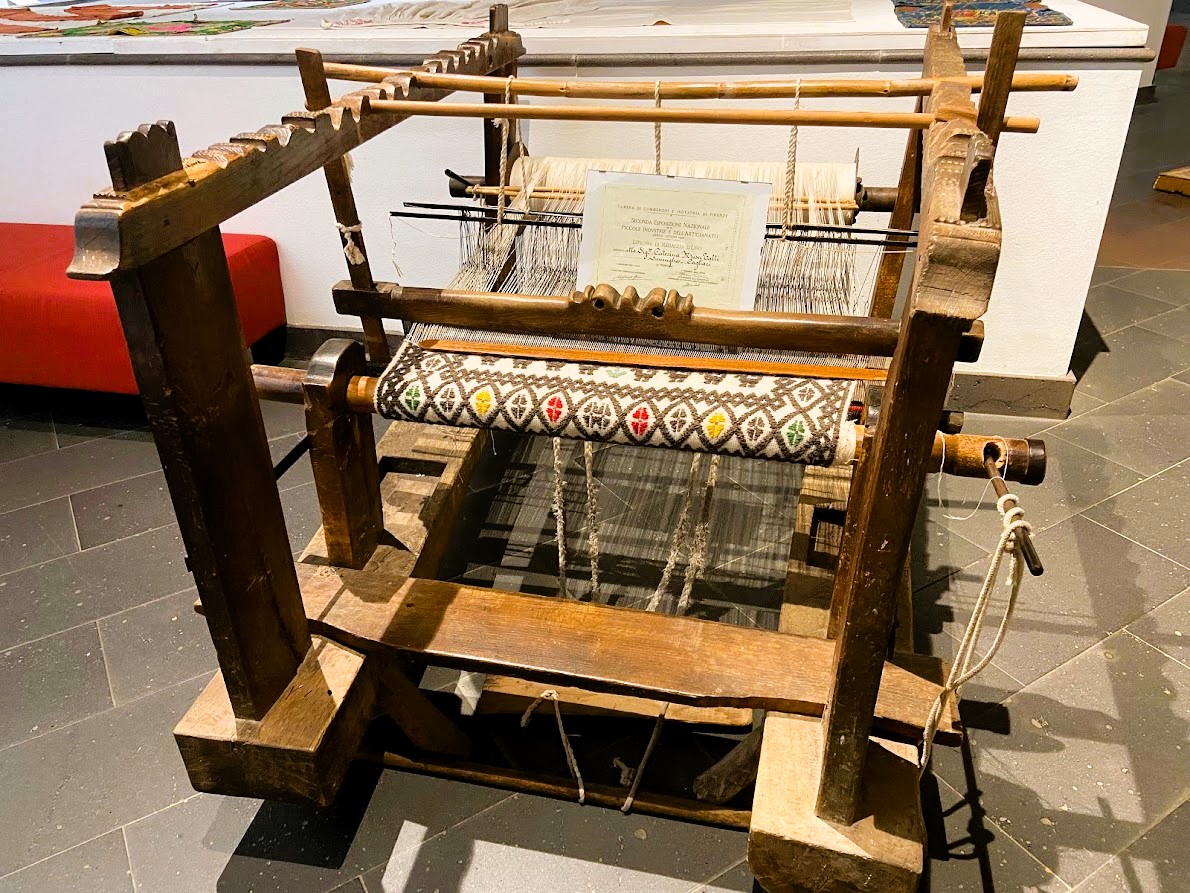
Clothing and textile world
Weaving has a long history in Sardinia. It is traditionally passed down from mother to daughter and still plays a large role in the island’s identity and craft activity. In the vast majority sheep’s wool is used, sometimes goat’s wool as well. From natural materials it is often flax, hemp or cotton. In the past, plants and other natural materials available on the island were used to dye the yarn. Depending on the weaving technique and the colour of the carpets, blankets and pillows, you can easily identify the city they come from. There are two types of weaving; on the horizontal state, which is more common, and on the vertical state, which is an older technique. The vertical machine consists of two vertical webs fixed between the floor and the ceiling, placed at a distance of about 2 m from each other. Two movable axes are fixed between the two posts: the upper one, which forms the warp beam, and the lower one, which forms the fabric beam. The warp is wound on the upper axis and then stretched on the lower one; two rods and a weft order axis, placed in a central position, regulate the opening of the slip between the even and odd warp threads to allow the introduction of the weft. The process starts downwards, with a kind of large bone awl, and the final product is beaten with a heavy wooden comb until the warp threads are tightened and completely hidden. In Nula, multi-coloured geometric motifs are created using this technique, in Sarula the emphasis is on colour contrast. A traditional horizontal loom consists of two heavy, parallel trestles that serve as a support for moving parts located transversely: the front fabric beam, and the rear, warp beam. The threads that form the warp are stretched between two spokes passing through a reed or metal comb placed in a central position relative to the spokes, together with a group of spokes of threads connected by cords to a pedal that is anchored to the floor. The plinths must be precisely parallel and all centre construction must be placed at right angles to the plinths to avoid irregularities in the fabric. Using a shuttle that carries the weft through the warp threads makes the work very fast, especially when producing flat fabrics with dropped wefts. For special decorative effects, additional decorative textures can be inserted directly, by hand using large needles or wrapped in small coils. These machines are used in Aggius, Giba, Bonorva, Villamassargia and Samugheu. In the latter, there is a unique textile museum, with both machines and a number of rare products, including the “tapinu ‘e mortu” funeral carpet, on which the deceased used to be buried in ancient times. In the museum there is one permanent part and second temporary exposition, which changes regularly. Here you can also see carpets woven for Agha Khan IV, a billionaire who contributed to the development of infrastructure and tourism on the Emerald Coast.
